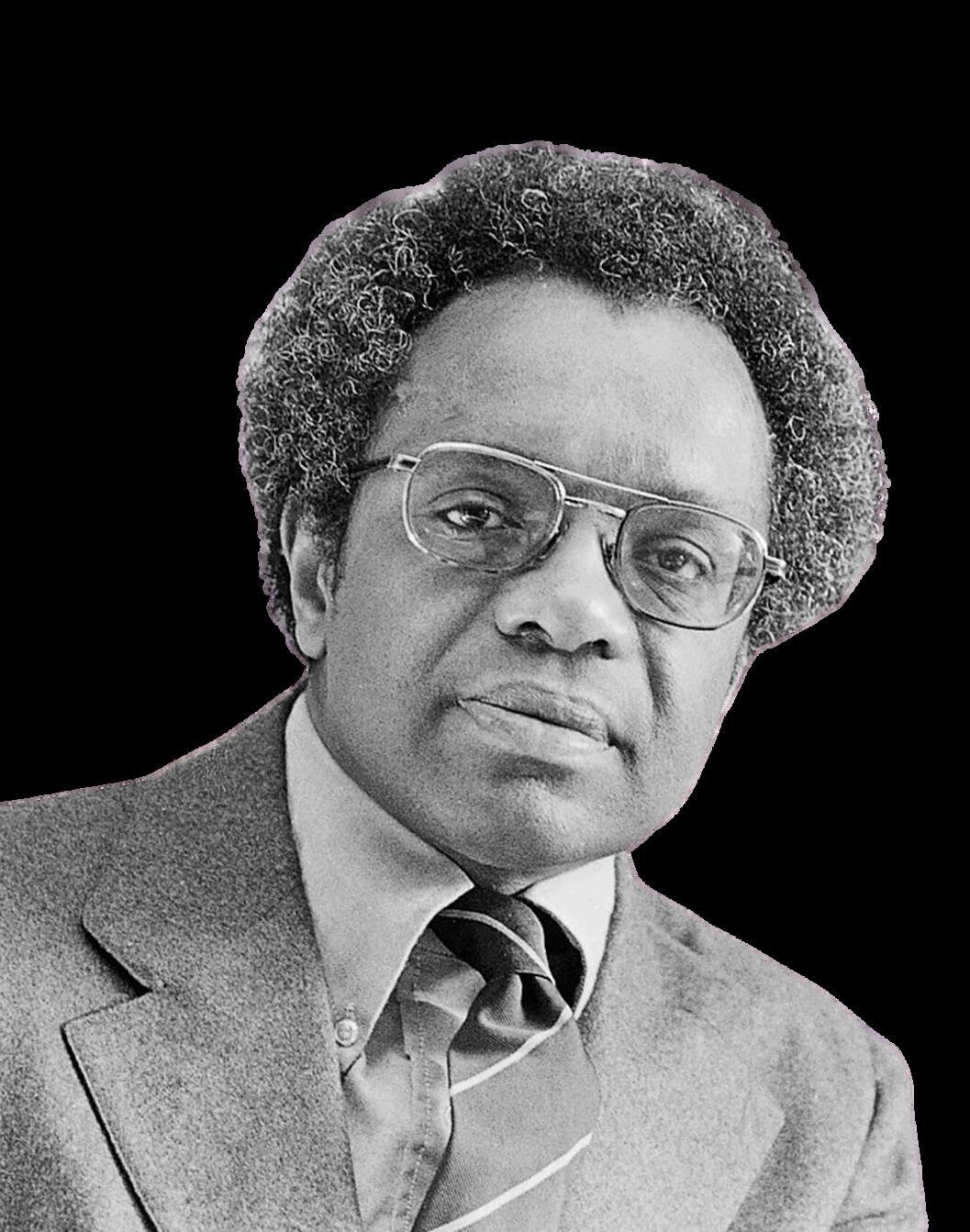








































Analyzing the Allegory
Deconstructing Interest
Convergence
Contextualizing Interest
Convergence in Theory Interest
Convergence in the Law Interest
Convergence in Art




Students will critically engage with Derrick Bell's Space Traders to understand its allegorical representation of racial dynamics in the U S and explore the concept of interest convergence through multiple texts, including legal cases such as Brown v Board of Education (1954) and Milliken v Bradley (1974) By the end of the session, students will contextualize interest convergence theory in both historical and legal frameworks, and reflect on its relevance to contemporary discussions on race, power, and education.











"The Space Traders" is a science fiction short story by Derrick Bell. As a short story, was published in 1992. However it originated in a different form under the title "The Chronicles of the Space Traders" as part of his 1989 speeches republished twice in law journals in 1989 and 1990



Field(s): Political psychology, sociology, social psychology Theory Overview: Social Dominance Theory (SDT) posits that societies are structured as group-based hierarchies, with dominant groups (e.g., based on race, class, gender) occupying superior social, economic, and political positions. The theory introduces the concept of Social Dominance Orientation (SDO), which is the degree to which individuals support the maintenance of groupbased hierarchies.
Example in Education: In education, Social Dominance Theory can explain how hierarchical structures (e g , based on race or socioeconomic status) are maintained through policies such as tracking, which often places marginalized students in lower academic tracks These systems reproduce social inequality by limiting access to quality education for lower-status groups.
Sidanius, J, & Pratto, F (1999) Social Dominance: An Intergroup Theory of Social Hierarchy and Oppression
Pratto, F, Sidanius, J, Stallworth, L M, & Malle, B F (1994) "Social Dominance Orientation: A Personality Variable Predicting Social and Political Attitudes." Journal of Personality and Social Psychology
Sidanius, J, Pratto, F, & Mitchell, M (2001) "Social Dominance Orientation: A Personality Variable Predicting Intergroup Relations and Social Hierarchies." Advances in Experimental Social Psychology
Main
Theorists: Vilfredo Pareto, Gaetano Mosca, C Wright Mills
Field(s): Political Science, Sociology
Elite Theory suggests that a small minority, consisting of members of the economic, military, and political elite, holds a disproportionate amount of power in society. These elites make decisions based on their own interests, often at the expense of the larger populace. Power remains concentrated within this elite group, which effectively controls key institutions and resources.
Elite Theory can be applied to the control of educational policy by powerful economic and political elites who shape curricula, standardized testing, and resource allocation. For instance, elite interests may drive the adoption of privatized education models, such as charter schools, which often align with neoliberal economic policies.
Top Three Most Cited Works:
Mills, C W (1956) The Power Elite Mosca, G (1939) The Ruling Class Pareto, V. (1935). The Mind and Society: A Treatise on General Sociology.



Theorist:
Cedric J Robinson
Field(s): Political Economy, Sociology, African American Studies
Theory
Racial Capitalism suggests that capitalism inherently exploits racial differences to maximize profit. Cedric Robinson argues that racial hierarchies are embedded in capitalism itself, and the economic system be racia capitalism
Example in Education: In education, Racial Capitalism can explain how educational disparities, particularly for students of color, are maintained through unequal resource allocation and systemic underfunding of schools in lowincome, predominantly non-white communities. For example, school districts with predominantly Black and Brown students often receive less funding than majority-white districts, perpetuating educational inequalities and ensuring a labor force that remains economically disadvantaged
Top Three Most Cited Works:
Robinson, C J (1983) Black Marxism: The Making of the Black Radical Tradition.
Leong, N (2013) "Racial Capitalism" Harvard Law Review
Kelley, R. D. G. (1997). "Thug Nation: On State Violence and Disposability" Social Text


Top Three Most Cited Works:
Field(s): Critical Race Theory, Legal Studies, Social Science Theory Overview: Interest Convergence Theory, part of Critical Race Theory (CRT), posits that progress for racial minorities only occurs when it aligns with the interests of the dominant (usually white) group. Bell argued that civil rights advancements, such as desegregation, only occurred because they benefited the white majority economically, politically, or globally, rather than out of a genuine commitment to racial equality.
Example in Education:
The 1954 Brown v Board of Education decision can be viewed through the lens of Interest Convergence While the decision helped desegregate schools, Bell argued that it was less about advancing Black rights and more about improving America's global image during the Cold War, as the U.S. was under pressure to demonstrate that it was a leader in democracy and human rights


1986: ReturnedtoHarvard ledafive-day sit-ininhisofficetoprotestthe school’sfailuretogranttenureto twoprofessorswhoseworkinvolved criticalracetheory

1987: Published AndWe areNot Saved
1990: Ends Tenureat Harvard
1991: BeginsaFaculty positionatNYU
1991: Published Racial Realism
1992: Publishes "Facesatthe Bottomof theWell:The Permanence ofRacism
2002: Publishes “Ethical Ambition: LivingaLife ofMeaning andWorth”
2004: PublishesThe DerrickBell Reader
“Tobecandid,Icannotaffordayearormorewithoutmy law-schoolsalary ButIcannotcontinuetourgestudents totakerisksforwhattheybelieveifIdonotpracticemy ownprecepts”
1996: “Confronting Authority: Reflectionsof anArdent Protester”
2004: Publishes "Silent Covenants: Brownv. Boardof Education andthe Unfulfilled Hopesfor Racial Reform"
November6,1930–October5,2011
Grutter v. Bollinger (2003) was a landmark U.S. Supreme Court case that upheld the affirmative action admissions policy of the University of Michigan Law School The case addressed the issue of whether the school's use of race as a factor in admissions decisions violated the Equal Protection Clause of the Fourteenth Amendment or Title VI of the Civil Rights Act of 1964
Case Background:
Plaintiff: Barbara Grutter, a white Michigan resident, applied to the University of Michigan Law School in 1997. She was denied admission and argued that the school's affirmative action policy, which considered race as a factor in admissions, discriminated against her based on her race.
Defendant: University of Michigan Law School defended its admissions policy, stating that the use of race was one factor among many to promote diversity, which was a compelling interest for educational institutions.
Key Legal Question:
Does the use of race as a factor in admissions decisions to achieve a diverse student body violate the Equal Protection Clause of the Fourteenth Amendment?
Supreme Court Decision:
In a 5-4 decision, the Court ruled in favor of the University of Michigan Law School, holding that the institution’s affirmative action policy was constitutional.
Majority Opinion (written by Justice Sandra Day O’Connor): The Court affirmed that promoting diversity in higher education is a compelling governmental interest The law school's narrowly tailored use of race, as part of a holistic review of each applicant, did not constitute an unlawful quota system, which would have been unconstitutional
Holistic Review: The Court highlighted that the law school did not automatically admit students based solely on race but instead considered race as one factor among many, allowing for individualized consideration of each applicant.
Compelling Interest: The Court recognized diversity in education as a compelling interest because it enriches the educational experience and prepares students for an increasingly diverse workforce and society.
Dissenting Opinion:
Justice Clarence Thomas and others argued that any use of race in admissions decisions was inherently unconstitutional and that the Equal Protection Clause required a colorblind approach.
Significance:
The decision reaffirmed the constitutionality of affirmative action policies in higher education, so long as they are narrowly tailored and do not rely on rigid quotas. It was a major victory for advocates of affirmative action, emphasizing the importance of diversity in education and allowing race to remain one factor in a multifaceted admissions process.
Grutter v. Bollinger remains a key precedent in debates about affirmative action and equal protection in education
1. The University’s Interest in Diversity and its Alignment with Broader Societal Interests:
In Grutter v. Bollinger, the Supreme Court upheld the University of Michigan Law School’s use of affirmative action on the grounds that promoting diversity in higher education serves a compelling societal interest. According to Bell’s interest convergence theory, racial progress for marginalized groups occurs when it aligns with the interests of the dominant group. In this case:
The law school’s argument for diversity wasn’t solely about improving opportunities for students of color Instead, it centered on the benefits of diversity for all students, including white students The Court accepted that a diverse student body enhances the educational experience for everyone, preparing graduates for leadership in an increasingly diverse society
This framing aligned the interests of underrepresented minority students with the broader educational and societal interests of white students and institutions.
2. Affirmative Action as a Benefit to Elite Institutions:
The Court’s decision in Grutter can also be seen through the lens of interest convergence because it allowed elite institutions, like the University of Michigan Law School, to continue using raceconscious admissions policies to maintain a diverse student body. This diversity benefits the institutions in several ways:
Institutional Legitimacy: Universities could claim to be fostering inclusion and social responsibility by admitting a diverse student body, which enhances their reputation in the global and professional fields.
Economic and Global Competitiveness: The ruling emphasized that diversity in education was critical to preparing students to work in a globalized economy. By promoting racial diversity, institutions could claim they were creating leaders equipped to succeed in a multicultural world, thus benefiting society's elite (including predominantly white employers and industries).
3 Conditional Support for Racial Progress:
The case reflects Bell’s idea that racial progress often comes with conditions that primarily benefit white interests The decision allowed for affirmative action but placed limits on it, emphasizing that such policies must be "narrowly tailored" and temporary The Court implied that affirmative action should not continue indefinitely, signaling that support for racial progress is contingent and may be withdrawn when it no longer serves the dominant group’s interests:
Limited Scope: The ruling did not suggest that affirmative action is a permanent tool for racial justice but rather a temporary measure to promote diversity, which could eventually be phased out once the interests of the dominant group have been met.
Conclusion:
Grutter v. Bollinger (2003) aligns with Bell’s interest convergence theory because the decision upheld affirmative action not solely to benefit racial minorities but because it aligned with the broader educational and societal interests of the dominant group (white students, institutions, and the workforce). The ruling allowed progress for marginalized groups (increased access to higher education) but did so within a framework that prioritized the interests of elite institutions and whitemajority society.
Milliken v Bradley (1974) was a significant U S Supreme Court case concerning school desegregation and the limits of federal authority to impose remedies for racial segregation in public schools.
Case Background:
Issue: The case originated in Detroit, Michigan, where schools were heavily racially segregated. A federal district court found that the segregation was a result of both state and local policies, and it ordered a busing plan to integrate the predominantly Black schools in Detroit with the surrounding predominantly white suburban schools.
Plaintiffs: The plaintiffs, representing Black students in Detroit, argued that segregation was unconstitutional and that a metropolitan-wide desegregation plan was necessary to achieve meaningful integration.
Defendants: Michigan Governor William Milliken and suburban school districts argued that since the suburban districts were not responsible for segregation, they should not be included in the desegregation plan.
Key Legal Question:
Can a federal court impose a desegregation plan that crosses school district lines, requiring suburban districts to participate in desegregation efforts aimed at addressing segregation in the Detroit public schools?
Supreme Court Decision:
In a 5-4 decision, the Supreme Court ruled that federal courts could not impose a multidistrict desegregation plan unless it was shown that the suburban districts had deliberately engaged in acts of segregation.
Majority Opinion (written by Chief Justice Warren E. Burger): The Court held that the segregation found in Detroit’s schools was confined to the city and that suburban school districts could not be compelled to participate in desegregation unless there was clear evidence that they had contributed to the segregation. The ruling emphasized the importance of local control over schools and rejected the idea that metropolitan-wide remedies were necessary for desegregation.
Significance:
The ruling marked a major setback for desegregation efforts, as it limited the ability to address the segregation of urban schools by isolating the issue within city boundaries, even when white flight to the suburbs had exacerbated racial divisions.
It effectively allowed for continued racial segregation in many urban school districts, as it became difficult to desegregate schools without including the surrounding, predominantly white suburban areas
The decision highlighted the limitations of Brown v Board of Education (1954) in achieving meaningful integration and signaled a retreat from aggressive desegregation efforts across district lines
Impact:
Milliken v. Bradley made it clear that desegregation remedies were largely confined to individual districts and could not force integration across city-suburb lines unless intentional discrimination was proven in the suburbs. This decision entrenched the divide between urban and suburban schools, reinforcing racial segregation in many American cities.
Milliken v. Bradley (1974) is closely connected to Derrick Bell’s interest convergence theory, which posits that racial progress for marginalized groups happens only when it aligns with the interests of the dominant (white) group. This case can be seen as a clear example of how the interests of white suburban communities diverged from those of Black urban communities, leading to a setback in desegregation efforts.
In Milliken v. Bradley, the Supreme Court ruled that suburban districts could not be forced to participate in Detroit’s desegregation plan unless it could be shown that they were directly responsible for the segregation. This decision safeguarded the interests of white suburban residents, who were opposed to busing or any measures that would disrupt their local school systems by integrating them with predominantly Black urban schools.
According to interest convergence, the Court's decision reflects how the interests of white suburban communities were prioritized. These communities had an economic and social interest in maintaining local control over their schools and preventing racial integration with urban areas. White families were able to avoid the costs both perceived and actual of school integration, such as busing, changes to their school demographics, and potential shifts in property values
Interest convergence theory suggests that racial progress is tolerated only when it does not threaten the privileges or material interests of white society The Brown v Board of Education ruling (1954) mandated desegregation, but Milliken v. Bradley effectively limited the reach of Brown by confining desegregation efforts to urban districts without compelling white suburban involvement. The decision demonstrates how the interests of racial equality and desegregation took a backseat when they conflicted with the interests of the white majority, particularly those in suburban districts. By restricting desegregation to within city limits, the Court’s ruling ensured that white suburban families remained unaffected by efforts to integrate schools illustrating Bell’s theory that progress for marginalized groups (Black students) was halted when it posed a threat to white interests.
3. Disinvestment in Urban Education:
The decision allowed for the continued separation of predominantly Black urban schools from wealthier, predominantly white suburban schools. This maintained unequal funding, resources, and educational opportunities, which benefited suburban (mostly white) communities at the expense of urban (mostly Black) students.
Interest convergence here suggests that the decision protected the economic interests of suburban districts by preventing the redistribution of resources or students. The ruling ensured that wealthier suburban districts did not have to share their resources or educational opportunities with poorer, urban schools, thus preserving the advantages held by white students
4 Upholding Local Control to Maintain Racial Status Quo:
The Court’s emphasis on “local control” over school districts reinforced the power of suburban (and predominantly white) communities to dictate the racial makeup of their schools This focus on local autonomy aligns with interest convergence by ensuring that white communities retained control over policies affecting their schools, without external mandates to integrate. From Bell’s perspective, the ruling reflects how policies that threaten the racial status quo where white families have better educational opportunities are curtailed unless the dominant group perceives a direct benefit to themselves.
Conclusion:
In Milliken v. Bradley, the Supreme Court’s decision exemplified interest convergence by protecting the interests of white suburban communities at the expense of meaningful desegregation for Black urban students. The ruling limited racial progress when it conflicted with the social, economic, and educational interests of the dominant white group, allowing segregation to persist in urban areas while shielding the suburbs from integration efforts.
Brown v. Board of Education (1954) was a landmark U.S. Supreme Court case that declared racial segregation in public schools unconstitutional. It overturned the "separate but equal" doctrine established by Plessy v. Ferguson (1896), which had allowed racial segregation as long as facilities for Black and white students were deemed equal.
Case Background:
Plaintiff: The case was initiated by Oliver Brown, a parent in Topeka, Kansas, who sued the local Board of Education after his daughter, Linda Brown, was denied entry to an all-white elementary school. Brown argued that segregated schools violated the Equal Protection
Clause of the Fourteenth Amendment.
Defendant: The Board of Education in Topeka argued that segregated schools were legal under the "separate but equal" precedent set by Plessy v Ferguson
Legal Question: Does racial segregation of public schools violate the Equal Protection Clause of the Fourteenth Amendment?
Supreme Court Decision:
In a unanimous decision, the Court ruled that segregation in public schools was unconstitutional because "separate educational facilities are inherently unequal."
Chief Justice Earl Warren, who delivered the opinion, argued that segregation created a sense of inferiority among Black children that affected their ability to learn, thus violating the Equal Protection Clause of the Fourteenth Amendment.
Key Points:
Psychological Impact: The Court referenced social science research, including the famous "Doll Test" by psychologists Kenneth and Mamie Clark, to argue that segregation harmed the self-esteem and development of Black children.
End of Separate but Equal: The ruling overturned Plessy v. Ferguson, rejecting the idea that separate facilities could ever be truly equal.
Significance:
Desegregation: The decision was a major victory for the Civil Rights Movement, marking the beginning of the end of legalized racial segregation in the U S public school system
Resistance: Despite the ruling, many states in the South resisted desegregation for years, leading to further court rulings and federal intervention
Legacy: Brown v Board is considered a foundational case in the struggle for civil rights, setting the legal precedent for future rulings against racial segregation in other public institutions.
In short, Brown v. Board of Education was a crucial turning point in American history, formally declaring that segregation in public education was unconstitutional and paving the way for greater racial equality in the U.S.
Brown v Board of Education (1954) is deeply related to Derrick Bell's concept of interest convergence, which argues that racial progress for marginalized groups, particularly Black Americans, happens only when it aligns with the interests of the dominant (white) group. According to Bell, the Brown v. Board decision can be understood through this lens, as the ruling primarily served broader national and international interests rather than purely advancing racial equality
Key Ways Brown v. Board Relates to Interest Convergence:
1. International Pressure during the Cold War:
Interest Convergence Theory suggests that the U S government was motivated to end formal school segregation not out of genuine concern for Black Americans' rights but because the ruling aligned with the nation's global interests during the Cold War.
In the 1950s, the U S was competing with the Soviet Union for global influence As the U S claimed to be a champion of democracy and human rights, racial segregation in its schools and society severely undermined its image on the world stage, especially as newly decolonized African and Asian nations were evaluating which superpower to align with.
The decision in Brown helped improve the U S 's international image, showing that the country was making progress toward racial equality, even though actual implementation of desegregation was slow and met with resistance
2. Economic and Social Stability:
Bell's theory argues that the ruling was also influenced by concerns about domestic stability The postWorld War II period saw significant migration of Black Americans to northern cities, and racial tensions were rising due to segregation and unequal treatment.
Desegregating schools was seen as a way to prevent larger-scale unrest or protests that could disrupt social and economic order The ruling helped to ease racial tensions without significantly threatening the broader societal interests of white Americans
3. Limited Scope of the Decision:
Brown v. Board was a symbolic victory for civil rights, but Bell argued that it offered limited, controlled progress for Black Americans while leaving much of the racial status quo intact Even after the ruling, actual school integration was slow, and many southern states resisted or implemented "massive resistance" strategies, such as creating private, all-white academies.
By focusing on education, the ruling offered progress that was more palatable to white Americans than broader, systemic racial reforms It suggested that racial equality could be achieved without major disruptions to white economic, political, or social power structures
4. The Benefits for White Society:
Bell argued that desegregation in schools, as envisioned in Brown, also provided benefits for white society White students in integrated schools could receive the benefits of a diverse learning environment, better preparing them for leadership in an increasingly diverse world
By framing the decision in terms of benefits for society as a whole (rather than solely focusing on racial justice), Brown was an example of how racial progress for Black Americans was advanced when it aligned with the broader interests of the dominant group
Conclusion:
Brown v. Board of Education is often celebrated as a victory for racial equality, but from the perspective of interest convergence, it was a decision that served the interests of both Black Americans and the broader political, social, and economic interests of white America The ruling allowed the U S to maintain its international standing during the Cold War and ease domestic racial tensions without fundamentally altering the power dynamics between Black and white Americans. Bell's interest convergence theory thus offers a critical lens through which to view this landmark case, highlighting the limitations and conditions under which racial progress was permitted

Crown of Thorns, 2020




Finishing School, 2023



